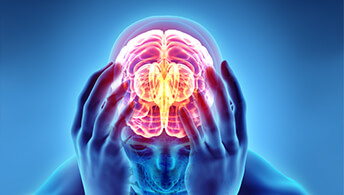A common form of spinal degeneration
It is estimated that over 40 million Americans suffer from cervicogenic headaches. Cervicogenic headaches originate in the cervical spine and occur when there is continuous stress placed on the neck. Such stresses include whiplash, arthritis, or any type of injury that could cause a cervical nerve to become irritated or compressed.
Causes of Cervicogenic Headaches
Most headaches are considered primary because they are not the result of an underlying disease or trauma. Cervicogenic headaches are considered secondary headaches because they are caused by a secondary trauma or disease. This is also known as referred pain, or pain that feels as if it is occurring somewhere else in the body other than the actual source.
Common causes of cervicogenic headaches include:
- Posture; resulting from excessive sitting, especially if working at a desk or driving for long periods, excessive standing such as those who work in service industries.
- Neck disorders; lesions, tumors, arthritis in the cervical spine, and/or a prolapsed disc or infection.
- Injury; people who are extremely active in sports may experience cervicogenic headaches, especially if they fall or sustain an injury. Any type of injury that mimics a whiplash-type motion can cause cervicogenic headaches as a result of compressed or pinched nerves in the cervical spine joints, head, or neck.
Symptoms
Cervicogenic headaches are often mistaken for migraines, and while headache pain resides in one or both sides of the head, cervicogenic headaches are accompanied by neck pain or pain at the base of the skull. Other symptoms associated with cervicogenic headaches include:
Pain brought on by neck movement
Neck stiffness
Holding the head in an awkward position
Nausea
Neck sensitivity
Dizziness
Pain when coughing
Diagnosis
Although cervicogenic headaches and migraines appear similar, their treatment options are very different. This is why it’s important to visit an experienced pain management specialist to get the most thorough and personalized treatment. Your evaluation will consist of reviewing your medical history, analyzing your symptoms, and performing tests such as x-rays or MRI/CT scans. These techniques will pinpoint your pain and lead to the most effective treatment options.
Possible Treatments
Treatment for cervicogenic headaches can begin with OTC medication (Ibuprofen, Aleve, Tylenol, etc.) or with hot and cold therapy in which you apply heat or ice up to 15 minutes per day, several times per day to alleviate symptoms.
Although rare, spinal surgery may be scheduled by your physician to relieve headaches that are the result of nerve compression.
Other treatment options may include:










